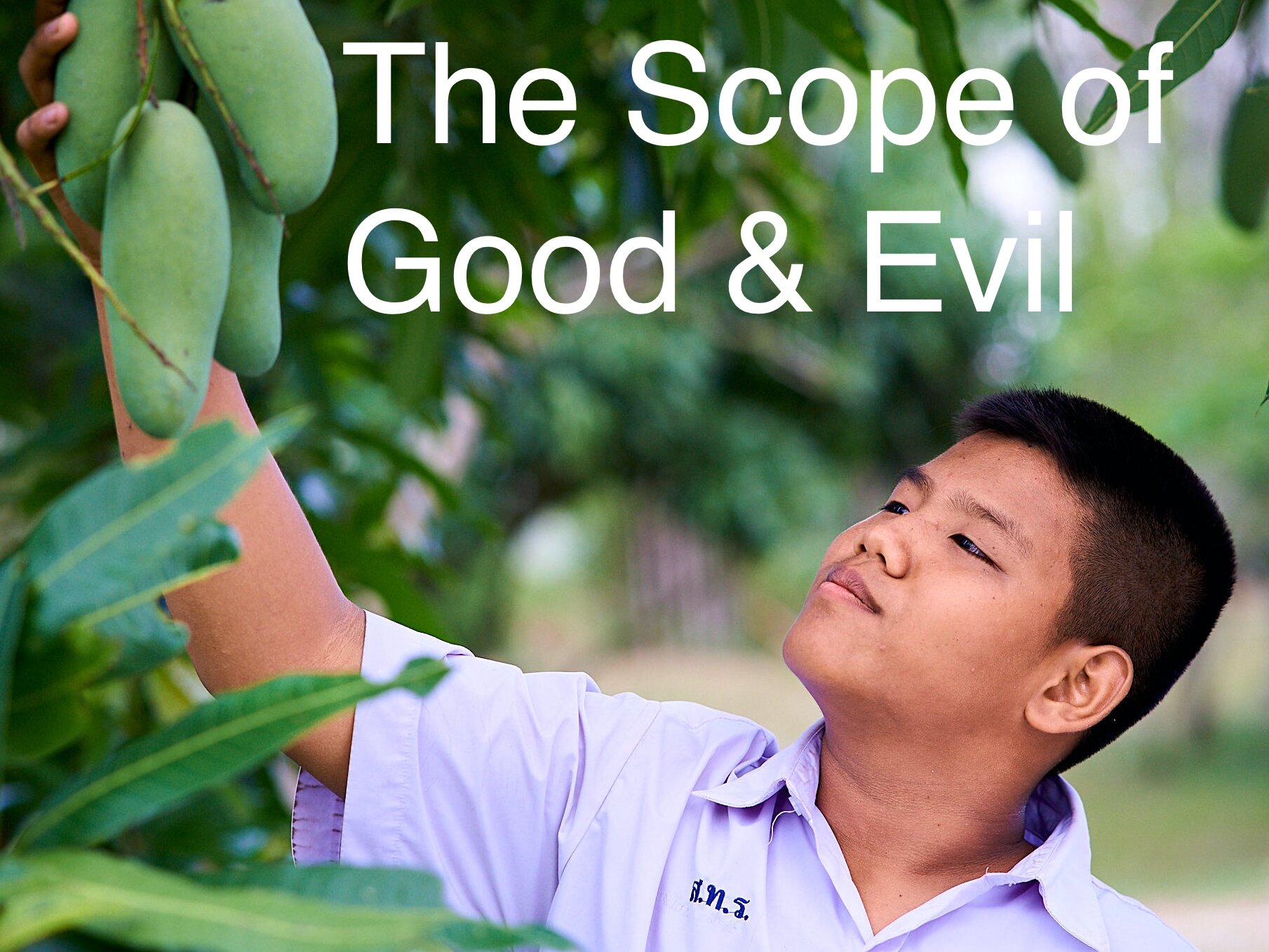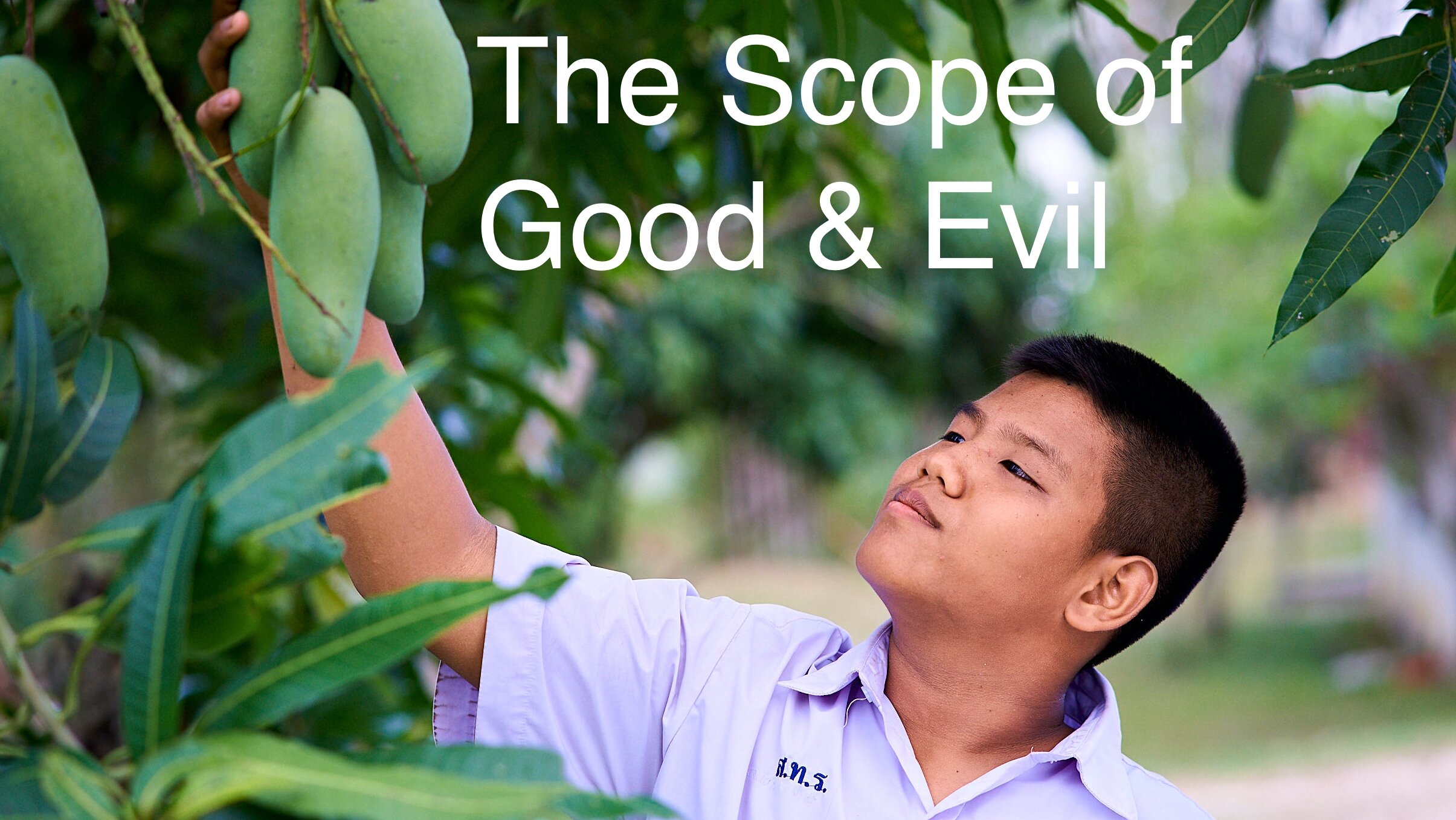Picture by Bryon Lippincott
It is shortsighted to view sin only through the small lens of “I” and “you.” Sin is much more than an individual problem. It is a global problem that impacts society, culture and nations. Sin also matures through generations and iniquities grow generationally, through families, communities and peoples. Though sin is also an individual issue, it is frequently recognized as a corporate or “group” problem, throughout scripture.
The core idea is this: Personal misalignment to God’s purpose breeds heart handicaps. These can manifest in actions that are sinful. Those actions negatively impact those around us, including our generations. Eventually this breeds a thinking process in communities that is completely self-centered. This kind of self focus lacks genuine outward flow to others; it disconnects us and breeds a suicidal death culture. When sin reaches these heights, evil becomes purposeful, like Hitler wreaking havoc on nations. As blood saturates the ground, the earth itself will revolt.
How we think about sin will impact our understanding of societal transformation and of what our work really is as followers of Jesus participating in the systems of the world. It also impacts our understanding of why Jesus became a curse on our behalf and his heaven-backed bailout package for the human race.
There are two views on humans. One view states man is ultimately flawed, broken and evil. Much of church theology for this begins in Genesis 2b-3 from information implicit in the text. We often refer to this as The Fall. The other viewpoint is that human beings are essentially good. Biblically, we can say that this teaching is rooted in Genesis 1-2a where God saw that creation was very good and that he formed us in the Imago Dei.
A potentially more Jewish way of looking at this is we have tremendous drive in us towards both good and evil. We ate from the Tree of the Knowledge of Good and Evil. Both of these desires push and pull at humanity at large.
What concern’s us today is how a society, a culture is able to be transformed. What is the clay we are working with? Is it essentially evil or good? If it is by nature evil, it will eventually produce bad things. If it is at the core good, it should produce good things—fruit. Right?
There is an overlay, a development of sin in Genesis 1-7 that is useful for us to consider.
During this time of growing evil, the linage of Seth also emerged. It was a line of those who found value in seeking God and hearing him which culminated in Noah (Gen. 5). But God’s emotional reaction to the increase of evil on earth was a birth pain; it was God entering the pain of human suffering (Gen. 6). Then death manifested itself in all life (Gen. 7). Finally, after the flood receded, God made a covenant with Noah that he would never curse the earth again, as long as it endured (Gen. 8).
We see microcosms of sin maturing to fruition during the exile periods of Israel. But we see the sociocultural maturation of sin on a global level in the advent of Christ. “But when the fullness of timehad come, God sent forth his Son, born of woman, born under the law, to redeem those who were under the law, so that we might receive adoption as sons.” (Galatians 4:4-5). James describes the progression of sin this way: “Then desire when it has conceived gives birth to sin, and sin when it is fully grown brings forth death” (James 1:15).
The First Passover was in Egypt. Before the final plague, people were instructed to take an unblemished lamb from the flock and put its blood on the doorposts so that the death angel would pass-over. Those who did not, saw their firstborn son’s die. Firstborns were the prime receptors of inheritance. The lamb’s blood on the door posts is about Jesus’ sacrifice and therefore about us, preserved by his death for the beautiful inheritance the Father has for us.
During Passover, Jesus prophetically cursed the fig tree for not bearing fruit because he was emphasizing the empty fruit bearing cycle of sin that would be broken his obedience to the cross. The fruit of sin is fruitlessness/barrenness/death. When Jesus was killed by the human race, it was another “fullness of time” moment in history like the flood. Sin had matured (for death) in the earth and an era was closing, but a dawning church era was emerging at the same time. Jesus judged sin on the earth by becoming the sacrificial Lamb of God, nullifying our own “spirit of murder” with a forgiveness directly from heaven.
We as God’s people have an amazing covenant crafted by Jesus through the cross. It builds on the covenant God made with Noah to never harshly judge the entire earth. It is Jesus as the Passover Lamb whose sacrificial blood drips over the doorposts of our hearts.
When death came in Jesus’ day, it was not thousands dying in a climactic flood. It was the death of one; the death of the Creator. Sin brings its own judgment. Jesus as the perfect lamb was condemned by our own sin. He became the fruit of our sin because as he promised Noah, I will never bring the curse on the earth again. He stood in the gap on our behalf to break the curse of death.
Today we are incarnated in the world by presence of the Spirit of Jesus, who made a room for us and became the door for us to be part of the Father’s family through his cross. As our world shakes, we still have our inheritance in an unshakable kingdom. Let’s reach out however we can and stand in the gap for our world today. Our hope is in Jesus’ coming but we can still pull heaven’s mercy into the present day, bringing hope and solutions. It is our inheritance.
Author’s note: For me this blog leaves a lot of unanswered questions but it also begins to grapple with some geo-historical patterns that are useful paradigms for any thoughtful follower of Jesus. If you come away with questions, this is good. May you dig deeper and look higher than you have before!
Picture by Bryon Lippincott



